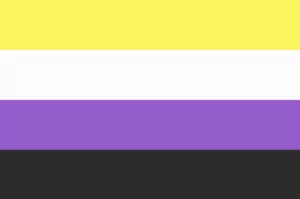Everyone is familiar with B2C ecommerce, but B2B online shopping…?
During the Covid-19 pandemic B2B online sales overtook physical sales for the first time in history. Now accounting for ~20% of B2B trade, B2B ecommerce offers the same convenient and efficient purchasing experience consumers have enjoyed for years. Today’s guest is part of this revolution in business procurement.
Hear our conversation with Louis Carbonnier, Co-Founder at Hokodo:
- What it means that B2B sales are migrating online
- How convenience, choice, and trust are payments differentiators
- The growing trend of embedded finance services
Migration to online sales as a B2B signal
In a prime position to help those migrating, Louis’ team functions as an enabler of Buy Now Pay Later (BNPL) solutions for businesses.
This is specific to businesses paying online and looking for versatile payment terms.
Louis isn’t claiming to do anything new per se. Known as credit terms in the traditional sense, B2B BNPL has existed for centuries. It’s the method of delivery that’s changing, thanks to technology.
B2C has led the paradigm shift
People have looked online to fulfill their commerce requirements as individuals for quite some time. It’s only recently that we’re seeing businesses follow suit.
While the pandemic has certainly played a role as a catalyst, it’s also being done to seek speedier solution deployment in the face of business challenges.
“Online sales have surpassed physical sales in B2B for the first time in history. B2B ecommerce is going to become much larger.” — Louis Carbonnier
Requirements for successful B2B online sales
Louis highlights a few elements to focus on if you’re trying to succeed in this space:
- Check the credit-worthiness of your counterparts
- Establish your collections team and process
- Set rules and conditions for the distribution of bad debt (on invoices that remain unpaid after the collections process is rolled out)
Payment differentiators: convenience, choice, and trust
Every year there is a nuance in thinking and buying trends that is influenced as new generations enter the workforce and business leadership community.
As younger people tend to make up the bulk of the workforce around the world, their expectations set the bar for product and service development and delivery in the B2B world.
It all comes down to convenience, choice, and trust. Providing payment methods and terms that work for both the B2B buyer and seller will galvanize their trust in your brand and platform.
B2B marketplaces
It’s the fastest-growing segment for a reason. It offers the perfect environment for B2B buyers to evaluate the speed and reliability of vendors, examine and compare side-by-side the products on offer, read reviews and make informed choices.
“73% of the decision makers in B2B are Millennials. They are used to mobile, to a nice UX essentially .” — Louis Carbonnier
The intersection of B2B commerce expectations and abilities
The migration to digital B2B commerce is nowhere near complete or at a plateau. It’s only just getting started.
Louis suspects that the average order value or transaction size will continue to increase over time as factors of trust are both requested and provided for.
He also believes that there may be some kind of consolidation of providers still to come. Fintech is an extremely dynamic space at the moment. As it morphs and evolves into itself, the niches and parameters change often and there’s no easy way to tell when that will decelerate. Until that happens, we can expect more innovation and adaptation.
The growing trend of embedded finance services
One other challenge that comes with the territory is cross-border transactions and the parameters around embedded finance for these marketplace participants.
Louis’ team had originally outlined that only once a customer reached a turnover of roughly 15 million pounds would it be reasonable to expect the shift into exporting into Western Europe and other regions.
As it turns out, it has become more important that all of a B2B company’s customers can access equal payment terms criteria from wherever they are, simultaneously. The democratization achieved by digital commerce is transforming every part of the business environment.
The challenge of embedded finance for MNCs
The very definition of an MNC is changing with the migration to digital B2B commerce. With this, the challenge becomes the definition of which region’s legislation applies, jointly or not, and what to do when two regions have conflicting legislation.
One example Louis highlights is the unregulated lending culture of the UK vs the regulated lending culture of countries like France and Germany. It’s not easy for any payment provider to figure this out when facilitating BNPL for digital commerce, let alone offering an expanded range of embedded finance options.
Rules for collections, credit caps, insolvency, and legal recourse all differ from one country to another, creating a journey at least a few months longer for each country in which Hokodo aims to enable services.
Accessibility
Where only larger corporates could previously access embedded finance products, the Fintech community is today making these products available to smaller businesses.
All the while, Fintechs are striving to enable painless cross-border trade that feels familiar and meets those standards of convenience, choice, and trust.
“The most critical things that the marketplace can bring to customers are convenience, more choice, and trust. The cornerstone of trust is payments.” — Louis Carbonnier
To ensure that you never miss an episode of Payments Innovation, subscribe on Apple Podcasts, Spotify, or here and don’t forget to check out our YouTube!
Until next time!

